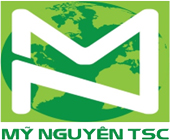An electronic ᴠɪѕɑ (ᴇ-ᴠɪѕɑ) is one of ᴠɪѕɑ types issued to foreigners by Vietnamese Immigration Department via electronic system. Vietnam ᴇ-ᴠɪѕɑ is valid from 30 days to 90 days.
Outside Vietnam foreigners who want to enter Vietnam can apply your ᴇ-ᴠɪѕɑ via this link: Apply for ᴇ-ᴠɪѕɑ
There are many options for processing time to ensure you can get your ᴇ-ᴠɪѕɑ on time.
- Processing time: 4-5 wokring days (normal processing time)
- Processing time: 3- wokring days (Rush)
- Processing time: 2 wokring days (Urgent)
- Processing time: 1 wokring days (Express)
- Processing time: 4 hours (Super Express)
- Processing time: 15-30 minutes (Emergency)
If you are not on list of 80 countries for ᴇ-ᴠɪѕɑ, you can apply VOA (ᴠɪѕɑ on arrival) via this link: Apply VOA
List of Countries that allowed ᴇ-ᴠɪѕɑ issuing. ᴇ-ᴠɪѕɑ Vietnam support for 80 eligible countries.
List of Ports that allowed foreigners enter and exit Vietnam by ᴇ-ᴠɪѕɑ.
Vietnamese Culture is one of the oldest culture in the World which has undergone changes almost four thousands of years. Some people said Vietnam culture has influence from Chinese culture but there is a study shows Culture of Vietnam has its own characters and has parallel development to Chinese culture. Along the history of Vietnam from the Dynasty of Trieu, Dinh, Ly, Tran & Le. In the pretty much same time with Chinese dynasty of Han, Duong, Tong, Nguyen.
According to scholarly sources, the Culture of Vietnam originated from ancient Nam Viet, an ancient kingdom of Giao Chi people which shared characteristics of Han Chinese cultures and the ancient Dong Son Culture, considered one of the most important progenitors of its indigenous culture, during the Bronze Age. Nam Viet was occupied by Northern evaders in 111 BC, leading to the first Chinese domination of Vietnam lasting over thousand years that propelled Chinese influences onto Vietnamese culture in terms of Confucian philosophy governance, and the arts.
Following independence from Chinese in the 10th century; successive Vietnamese imperial dynasties flourished as the country embarked on a southward expansion that annexed territories of the Champa and Khmer civilizations; which resulted in regional variances of modern-day culture of Vietnam. During the French colonial period in the mid-19th century; Vietnamese culture absorbed European influences including architecture; Catholicism, and the adoption of the Latin alphabet, which created the new official writing system that replaced the previous Chinese characters and Nom scripts.
After French left, Vietnamese culture was characterized by government-controlled propaganda, which emphasized the importance of cultural exchanges with fellow communist nations such as the Soviet Union, China, and Cuba. Following the reform in 1986, Vietnam has continuously absorbed various influences from Asian, European, and American cultures. Part of the East Asian cultural sphere, Vietnamese culture has certain characteristic features including ancestor veneration and worship, respect for community and family values, and manual labor religious belief. Important cultural symbols include 4 holy animals: Dragons, Turtles, Phoenix, Unicorn. The national flower is lotuses and the most popular plant in Vietnam is bamboo.
1. Ethnic groups in Vietnam
Vietnam is a multiethnic country with over fifty distinct groups (54 Totally). Each of them has its own language, lifestyle, and cultural heritage. Many of the local ethnic groups residing in mountain areas are known collectively in the West as Montagnard or Degar.
The largest ethnic groups are: Kinh (Viet) 85.7%, Tay 1.9%, Tai Ethnic 1.8%, Mường 1.5%, Khmer Krom 1.5%, Hmong 1.2%, Nung 1.1%, Hoa 1%, with all others comprising the remaining 4.3% (2009 census). The Vietnamese has term for ethnic group (literally “minority people”). One distinctive feature of highland ethnic minority groups in Vietnam is that they are colorfully attired whether at home, in the farm, traveling or in their home town.
Many ethnic groups elsewhere such as southern part of Vietnam, Cambodia, Laos, Myanmar, China, Papua New Guinea, and many other countries do not wear attractive clothes while engaged in their day-to-day activities. The clothing of one group is quite different from that of other groups and adds color to the social landscape. When you travel in Vietnam, you will meet and even talk to many of them. In the trip to Sapa, you may see dozens of them or some province as Lai Chau has 20 ethnic groups ( more than 3 hundreds thousand habitats). Dak Lak province has most in Vietnam with 47 ethnic groups.
2. Social Beliefs & Customs in Vietnam
Family is very strong in Vietnam. Family and clan (dòng họ) are valued over individualism. Clan is the most important social unit in the country and each clan features a patriarch heading the clan and a clan altar. Even today, in some parts of the country, the tradition of clan members living together in longhouses is quite prevalent. It is also not uncommon to see three to four generations of a family living together in the same house. Members of a clan are related by blood and often name their villages based on their clan names. Death commemorations of clan members are usually attended by all members of the clan and villagers.
Weddings in Vietnam earlier was arranged mainly by parents and people were married very young. However, things have changed so much in recent years since Vietnam Open the door to the World and tourism pick up in early of 90. Vietnamese youth enjoy greater freedom of choosing the time of their marriage and their partner. Weddings are still mostly held in the traditional manner with elaborate rituals and ceremonies. The date for Wedding was carefully selected by Feng Shui master or most respected man in the Clan.
The traditional funeral ceremony in Vietnam is also quite elaborate and long-stretched. The body of the dead person is cleaned with fragrant water and dressed carefully in the special clothes. A lot of mourning following and depends on each tribe and location, they have the slightly different ceremony. Later the body will be burying, the most popular method. Recently, some area, people choose cremation instead of burying. Only 1 case of remains in frozen condition and several cases of Monks body was kept inside the statues…
According to Confucian, men and women can not touch hand unless they are husband and wife so Vietnamese people don’t hug when meeting. They say ” Xin Chao” or handshake between men.
People in the city talk gently and quietly and people come from the countryside or from the sea talk pretty loud. They work on the farm or ocean and they got to talk even louder than the wind or the waves.
3. Traditional costumes of Vietnam
54 tribes in Vietnam has their own traditional costumes. The traditional dress of the Vietnamese people changed significantly from time to time and depended largely on the whims and fancies of the region’s rulers. The common people of the country had greater freedom to choose their clothing prior to the Nguyen dynasty. During Nguyen Dynasty, several restrictions were placed on the type and colors of clothes that could be worn by the common people of Vietnam.
Some of the examples of traditional Vietnamese costumes are the Áo Giao Lĩnh, the Áo Tứ Thân, Áo Cánh, and the Áo Bà Ba. The first one refers to a cross-collared robe worn by the Vietnamese men while the second is a four-part dress worn by the women.
The last two dresses were worn by the peasants in the north and south, respectively and appeared like silk-pajama-type costumes. The color code of the dresses also varied from time to time and during Nguyen dynasty, only the monarchs enjoyed the exclusive rights of wearing golden clothes while purple and red were popular among the nobles and aristocrats. The headgear worn in Vietnam changed over the years with the conical hat or Non La being the most popular among the community.



